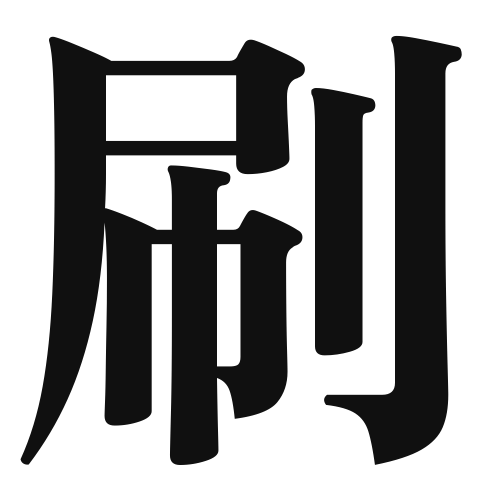1. Overview of Meaning
The kanji “刷” (satsu) primarily means “to print” or “to brush.” It is often associated with the act of applying ink or paint to a surface, such as in printing or painting.
2. Formation and Radical
Formation of the Kanji: The kanji “刷” is a phonetic-ideographic character (形声文字). It combines the meaning of “to brush” with a phonetic component that suggests its pronunciation.
Radical: The radical for “刷” is “刷” itself, which relates to the action of brushing or printing.
3. Examples of Usage
Common Words and Phrases: Some frequently used words that include “刷” are:
- 印刷 (いんさつ, insatsu) – printing
- 刷毛 (はけ, hake) – brush
Example Sentences in Daily Conversation:
- この本は新しく刷られました。 (このほんはあたらしくすられました。) – This book has been newly printed.
- 絵を刷るために刷毛を使います。 (えをするためにはけをつかいます。) – I use a brush to print the picture.
4. Synonyms and Antonyms
Similar Kanji: A similar kanji is “描” (びょう, byou), which means “to draw” or “to paint.” While both involve applying ink or paint, “刷” specifically refers to printing, whereas “描” refers to the act of drawing or painting.
Antonyms: An antonym for “刷” could be “消” (しょう, shou), which means “to erase” or “to delete,” representing the opposite action of applying ink or paint.
5. Cultural and Historical Background
Relation to Japanese Culture: The kanji “刷” is significant in the context of traditional Japanese arts, such as woodblock printing (浮世絵, うきよえ, ukiyo-e), which has a rich history in Japan.
Proverbs and Idioms: One common idiom that includes “刷” is “刷り込み” (すりこみ, surikomi), which refers to the process of imprinting or instilling something deeply in someone’s mind.
